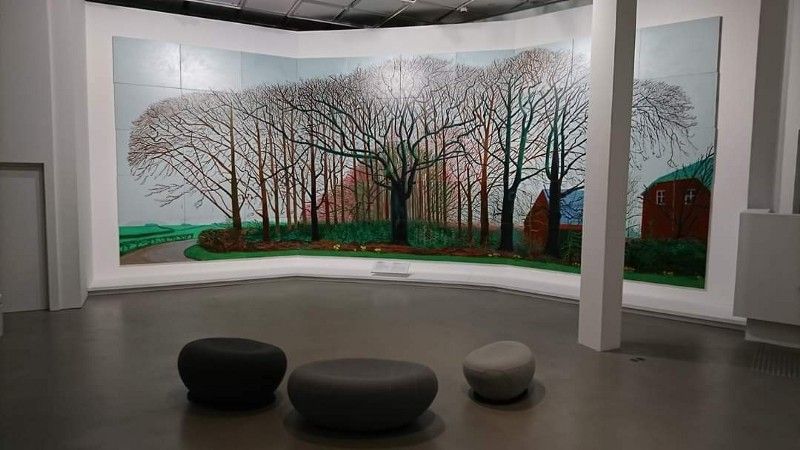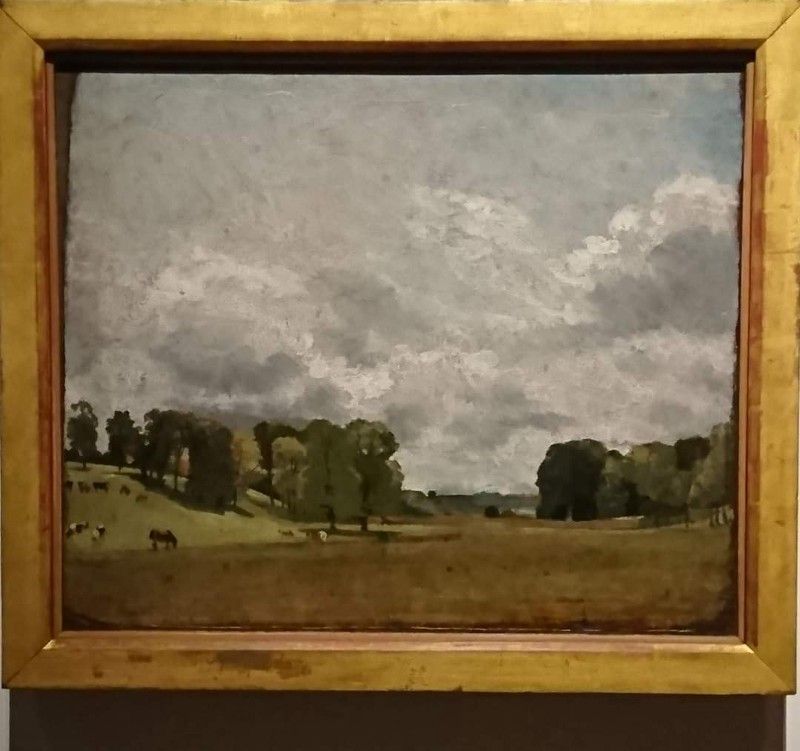On Viewing Landscape - From Turner to Hockney Ashin March 29, 2020

On Viewing Landscape - From Turner to Hockney
Ashin
March 29, 2020
Went for a walk before the closure of the Hong Kong Museum of Art due to the epidemic. Due to the special arrangement of only 2 hours of visit time, I only saw three of the exhibitions (in fact, some works can only be viewed casually), including "View · Landscape - From Tainer to Hockney", "Original Variations - Hong Kong Viewpoint" and "From Dung Baskets to Dining Carts - Exhibition on the Centennial of Wu Guanzhong's Birth". The common point of the three exhibitions is that the artist expresses the impression of a place with his own visual art techniques.
This time I would like to briefly talk about "View · Landscape - From Turner to Hockney", which focuses on a series of works by Constable and Turner. Constable and Turner are not unfamiliar to me at all, because the first lesson of Art History in A-level Art in the UK was to introduce their landscape paintings. Their works influenced the later development of Modern Art and even Contemporary Art: for example, contemporary artist Hockney developed his own series of works by studying portraits and landscape paintings of the 17th and 18th centuries, as well as paintings of the Renaissance.
Among them, the pavilion "Hometown and Foreign Countries" also displays a series of works by Constable and Turner. At the same time, they were influenced by Italian and French landscape paintings and pursued the truth in outdoor sketch paintings. However, Constable's later works are no longer faithful to reality. On the contrary, some non-existent scenes are inserted in the paintings to draw the ideal appearance in the heart; Turner was later influenced by the industrial revolution and pursued the speed of machinery like a locomotive, so he painted hazy smoke landscapes; their shadows can be found in 19th century Impressionist paintings of light.

David Hockney's largest oil painting is displayed independently on the 5th floor. This work develops from a series of his earlier collages of Polychrome photographs. In addition to the paintings in the exhibition hall, there is also a making-of video of this work, which is worth stopping to watch. You can't imagine that he spent a long time, sketching outdoors, returning to the studio to calculate the size of the enlarged painting and placing the virtual work on the photo of the actual exhibition venue, and then repeatedly completing and enlarging the painting until the present exhibition. out size. Since the painting is drawn 50 grids apart, he needs to use a computer to help him display the whole picture during production, and he can only see the complete completed painting at the exhibition site. If painting is a process, is it really a completely uncontrollable and completely unpredictable result?
Like my work? Don't forget to support and clap, let me know that you are with me on the road of creation. Keep this enthusiasm together!
